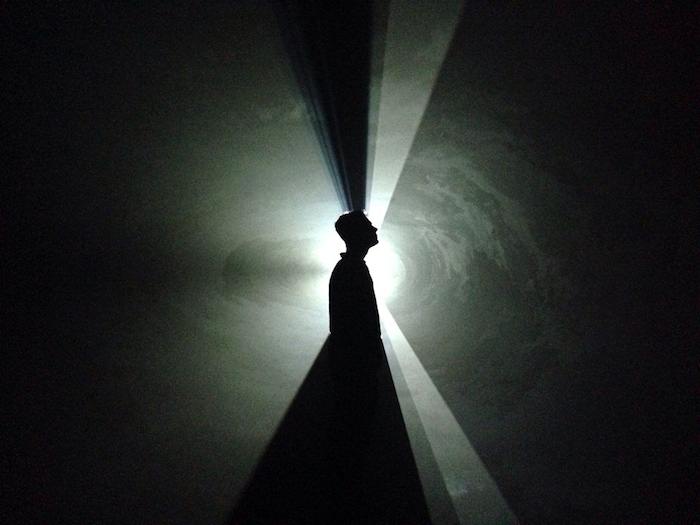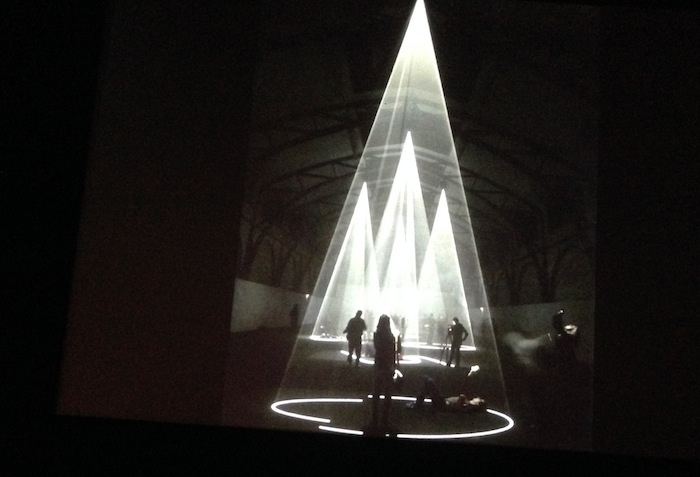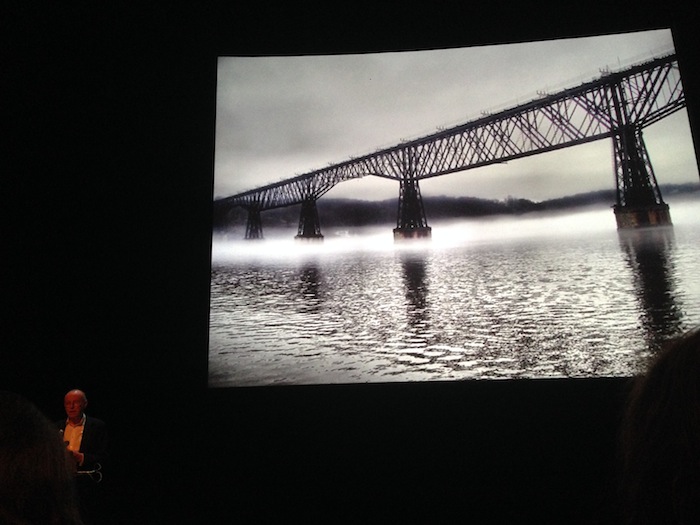Anthony McCall - Solid Light Films and Other Works (1971-2014) at EYE

During my stay in Amsterdam last month, I visited Anthony McCall's exhibition Solid Light Films and Other Works at EYE. Seeing and immersing myself in his light sculptures was quite an experience.
Since the 1970s Anthony McCall produced work including drawings, performances and large-scale light-projection installations, referred to as "solid light films."
McCall's sculptural light projections are at once minimalist in form and magical in effect, theoretical in essence and visceral when experienced. His moving light sculptures are in a permanent state of flux, consistently refusing to be classified by the confined categories of art history such as "sculpture" and "film."
The exhibition included some of the most important solid light films and McCall's process that led to the final works, including drawings, photographs, documentation of his early performances, maquettes and pages from his notebooks. In addition to the solid light films, there was a sound based installation titled Travelling Wave (the sound can be heard in the above video).
Anthony McCall. "Doubling Back" (2003). Installation view at the Whitney Biennial, 2004. Photograph by Hank Graber.
McCall's first solid light film, Line Describing a Cone (1973), consists of a 16mm projector and a role of film. McCall treated the role of film with a simple animation technique in such a way that a singel white dot on the screen gradually grows into a full circle. When projected in an open gallery space filled with a thin mist in the air the light beam of the projector becomes sculptural.
With his solid light films McCall set out to examine the foundations of film offering a critique of the commercial cinema industry, its manipulation of time and space, its use of narrative, montage and suture and its problematic relationship to the viewer.
Anthony McCall. "Long Film for Four Projectors" (1974). Installation view, 2003. Photograph by Hank Graber.
McCall turns cinema's raison d'être on its head and draws the viewer's attention away from the projected image towards the projection beam itself. By presenting his work in a museum setting, McCall also challenges the visitor to relate physically to the moving light sculptures.
The artistic context of the 1960s and early 1970s—the blossoming film co-op culture, expanded cinema, performance art, minimal art, structural film and conceptual art—provides the rich, multidisciplinary background against which to read McCall's projections.
Anthony McCall. "Meeting you Halfway (II)" (2009). Installation view at the Sean Kelly Gallery, New York, 2009. Photograph by Jason Wyche.
In the late 1970s McCall moved away from art. After a 20-year break, he resumed his career with a renewed sense of urgency and presented Line Describing a Cone at the landmark exhibition Into the Light at the Whitney Museum of American Art in New York in 2001. New digital design software, high-quality video projectors and improved technical conditions offered McCall new possibilities to revisit and expand on his works from the 1970s.
An evening with Anthony McCall
I was lucky to have had the opportunity to attend a talk with Anthony McCall. Hearing him talk about the progress of his work and his process was quite insightful. It's great to be able to see the progress of his solid light films from horizontal shapes to multiple vertical cones.
McCall said his light sculptures give you a "sense of being inside a living object", they have become "social spaces" where strangers meet, talk and even discuss the work.
McCall is drawn to slowness, which is felt in his work. He explained that when you watch a movie, you are required to engage with your mind. But with his light sculptures/solid light films, it's your body that needs to be engaged with the work. You need to slow down, remain motionless to really experience the slow moving light sculptures.

At the end of the talk, McCall shared an unrealised project titled Crossing the Hudson which he is still working on. A bridge that would take six months to complete its illumination, from one end to the other end of the bridge.
The aim is to have a continuous cyclical light installation where the bridge would be at its brightest during the darkest month. I hope this project comes to life.




